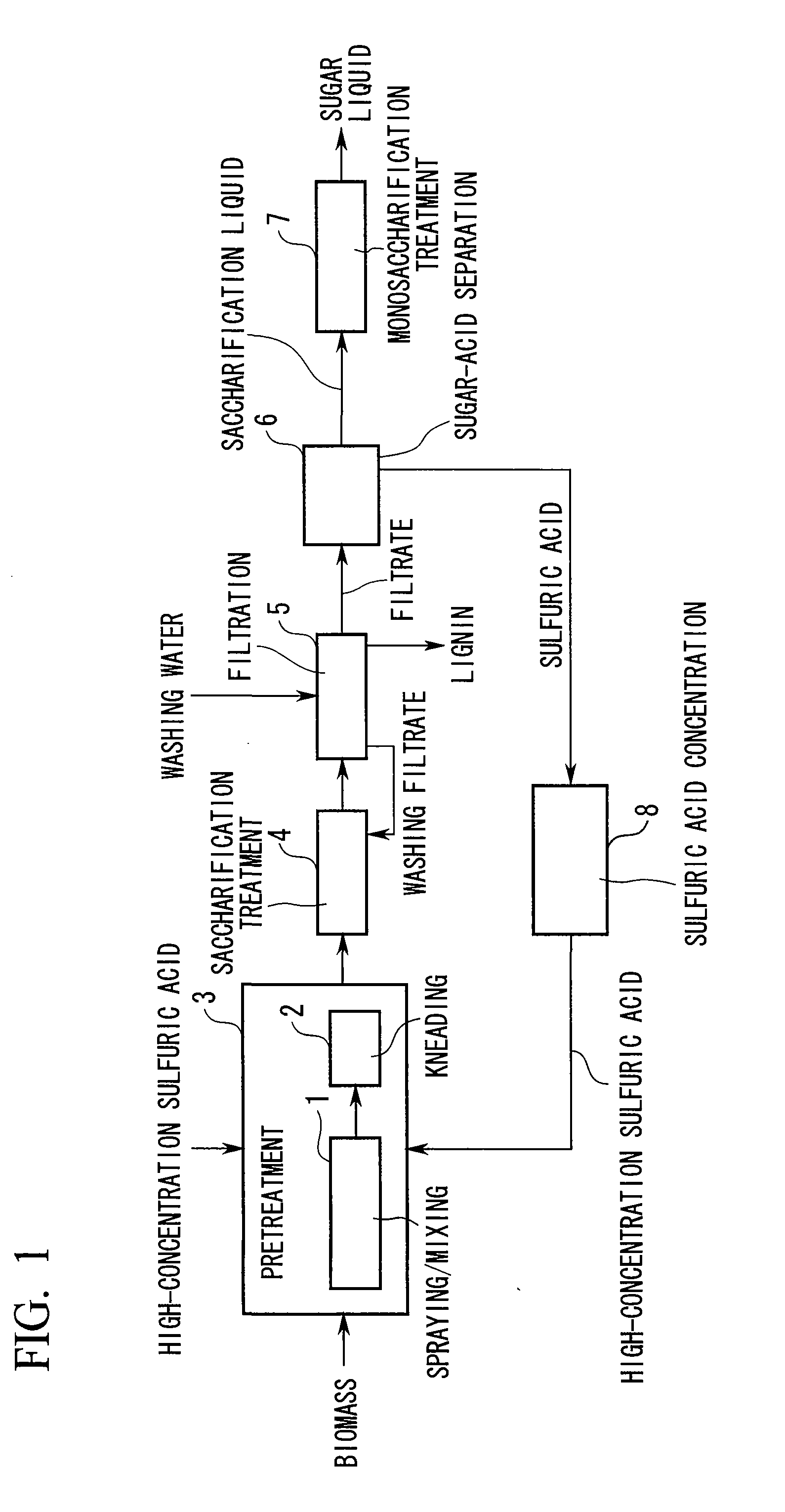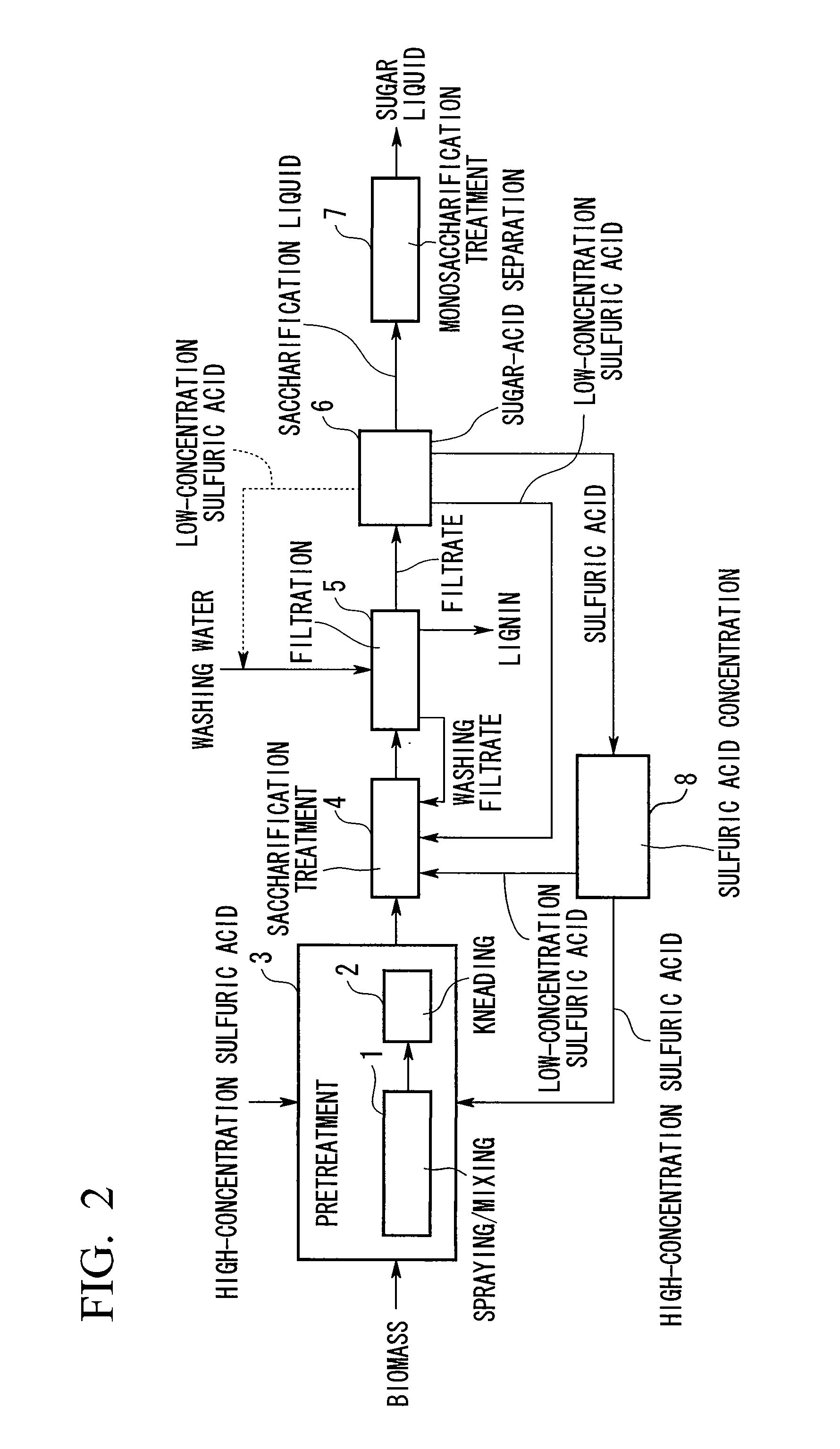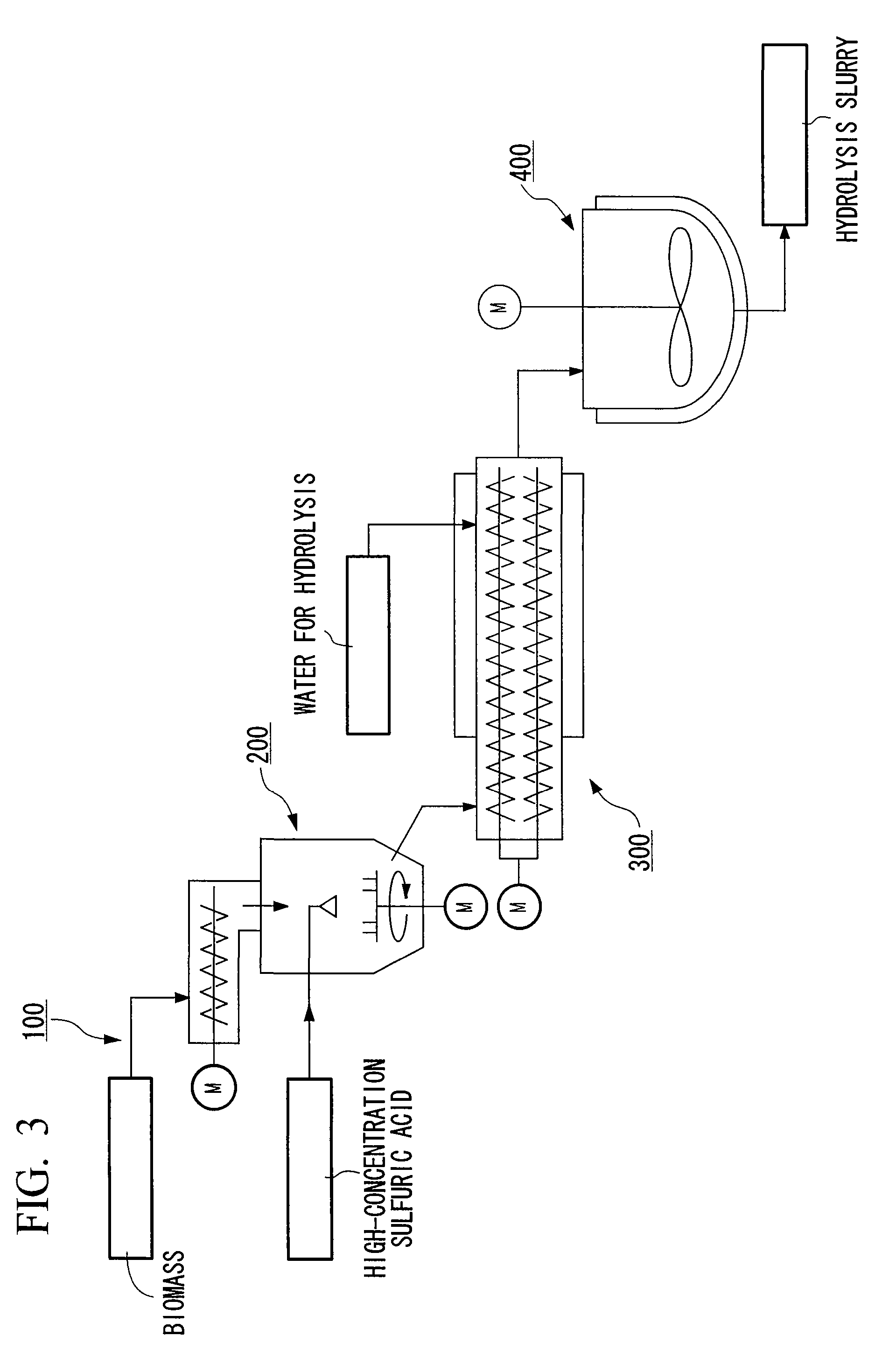Method for producing monosaccharides from biomass and monosaccharide production device
a monosaccharide and biomass technology, applied in the field of biomass conversion technology, can solve the problem of extremely low concentration of sugar formed following the second stage hydrolysis reaction (b>2/b>), and achieve the effect of improving the monosaccharide conversion rate and simplifying the process
- Summary
- Abstract
- Description
- Claims
- Application Information
AI Technical Summary
Benefits of technology
Problems solved by technology
Method used
Image
Examples
first embodiment
[0029]FIG. 1 is a flow chart of a monosaccharide production method as claimed in a first embodiment of the present invention. This monosaccharide production method of the present invention is composed of a first step 3 for carrying out pretreatment for decrystallizing and solubilizing a cellulose and hemicellulose contained in biomass, and a second step 4 for carrying out saccharification treatment for forming monosaccharides by a hydrolysis reaction.
[0030] Moreover, in the present embodiment, a step 2A 5, for carrying out filtration on the treatment product of the second step, is present after the second step 4, a step 2B 6, for separating the filtrate into sugar and acid, is present after this step 2A 5, and a third step 7, for carrying out monosaccharification treatment for converting unreacted oligosaccharide remaining in the saccharification liquid to monosaccharides, is present after step 2B 6.
[0031] Examples of materials used for the raw material biomass include paper, wood...
second embodiment
[0060]FIG. 2 is a flow chart of a method for producing monosaccharides as claimed in a second embodiment of the present invention. The sulfuric acid recovery and utilization step has been improved in the present embodiment. An explanation is only provided for those portions of the present embodiment which differ from the first embodiment, while an explanation of other portions is omitted since they are the same as the first embodiment.
[0061] The sulfuric acid fractioned in step 2B 6 is divided into a high-concentration sulfuric acid fraction (high extract) component and a low-concentration sulfuric acid fraction (low extract) component. In the present embodiment, the resulting low-concentration sulfuric acid fraction (low extract) component is used directly as sulfuric acid for diluting the concentration of the sulfuric acid that is returned to the second step 4. Alternatively, it may also be used instead of the washing water used to wash the solid in step 2A 5.
[0062] In addition,...
example 1
[0080] (Batch Method)
[0081] 700 g of pine chips (coniferous tree) having a moisture content of 9.1 (w / w) % and containing 414 g of holocellulose, and 1100 g of 71.5 (w / w)% sulfuric acid were charged into a mixing stirrer (Dalton) having a reactor volume of 10 liters followed by carrying out the pretreatment of the first step for 40 minutes at 50° C. Determination of the amount of sulfuric acid based on 100 (w / w)% conversion yielded a value of 786.5 g (1100 g×0.715), and calculation of the weight-based mixing ratio of sulfuric acid to biomass (absolute dry weight) yielded a value of 1.24.
[0082] Subsequently, hot water was charged into the reactor to dilute the sulfuric acid concentration to 30 (w / w) % followed by carrying out the saccharification treatment of the second step for 90 minutes at 85° C.
[0083] At this time, in order to investigate the degree of degradation of xylose present in the saccharification treatment liquid (second step treatment product), the concentration of x...
PUM
| Property | Measurement | Unit |
|---|---|---|
| temperature | aaaaa | aaaaa |
| temperature | aaaaa | aaaaa |
| temperature | aaaaa | aaaaa |
Abstract
Description
Claims
Application Information
 Login to View More
Login to View More - R&D
- Intellectual Property
- Life Sciences
- Materials
- Tech Scout
- Unparalleled Data Quality
- Higher Quality Content
- 60% Fewer Hallucinations
Browse by: Latest US Patents, China's latest patents, Technical Efficacy Thesaurus, Application Domain, Technology Topic, Popular Technical Reports.
© 2025 PatSnap. All rights reserved.Legal|Privacy policy|Modern Slavery Act Transparency Statement|Sitemap|About US| Contact US: help@patsnap.com



